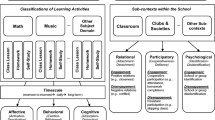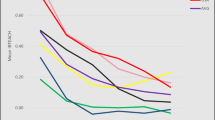Abstract
This essay seeks to contribute to the critical reception of Bloom’s Taxonomy of Educational Objectives by tracing the Taxonomy’s underlying philosophical assumptions. Identifying Bloom’s work as consistent with the legacy of Cartesian thought, I argue that its hierarchy of behavioral objectives provides a framework for certainty and communicability in ascertaining student learning. However, its implicit rejection of intuitive knowledge as well as its antagonism between the human subject and the known object promote the Enlightenment ideal of education as “intellectual work.” When embodied in the Taxonomy, Cartesian assumptions foster a fundamental disposition in front of reality that is ultimately alienating. The paper begins with an explication of the Taxonomy’s affordances and philosophical assumptions. I then identify the Cartesian elements of these assumptions, particularly the Taxonomy’s inherent mind–body dualism and primacy of method. Finally, the paper employs these elements as an explanatory factor for the predominant critiques of the Taxonomy in educational theory literature. An addendum questions the possibility or plausibility of distance from objectives frameworks in the contemporary classroom.
Similar content being viewed by others
Notes
For an excellent example of this dynamic, see Larry Cuban’s (1984) historical account of the failure of progressive educational principles to take hold in American schools.
Saussure makes the distinction between langue—the conventions of language—and parole—the embodied use of langue which establishes a world of meaning. In this case, the ubiquitous use of the terms in Bloom’s hierarchy (Knowing, Comprehending, Applying, Analyzing, Synthesizing, Evaluating) has come to shape the limits of classroom instruction. See de Sausure (2011).
As of Spring 2017, 38 states employ this program in some capacity, while 16 require it for licensure. See http://edtpa.aacte.org/state-policy#; accessed 2 February 2017.
Although Elizabeth Simpson (1966) independently published a psychomotor taxonomy a decade after the original volume, Bloom and his colleagues never attempted one.
Unless otherwise noted, quotations from Descartes’ work will be cited according to their placement in the Adam and Tannery (AT) (1897–1913) volumes as well as with a citation from the English translation used.
This is not to say that Descartes described a formal metaphysics. Rather, his work contains a workable “onto-theo-logy,” a concept Marion borrows from Heidegger to indicate that Descartes’ thought treats the ground of reality. For an elaboration of this concept, see Marion (1999b).
Aristotle’s works are cited according to Bekker numbers. Unless otherwise noted, translations are from Barnes (1975b).
Descartes’ notion of intuition is actually quite different from the common connotation. Cartesian intuition is an immediate apprehension of certain knowledge. In the Regulae, he explains “By ‘intuition I do not mean the fluctuating testimony of the senses or the deceptive judgement of the imagination as it botches things together, but the conception of a clear and attentive mind, which is so easy and distinct that there can be no room for doubt about what we are understanding” (AT X 368; Cottingham et al. 1984, vol. 1, p. 14). Jacques Maritain (1929) argues that this mode of knowing mirrors the scholastic account of angelic intuition.
Page citations are taken from the second edition of Kant’s Critique of Pure Reason.
I intend by “alienation” the classical conception of separation from one’s own nature. Here, unity with the body, the senses and affections, and embodied experience is taken as integral to the human person. In other words, Cartesian dualism is rejected on philosophical, not simply psychological grounds. Heidegger’s concept of Dasein is also instructive here. For a moving contemporary explication of the importance of mind–body unity, see Berry (2002). This sort of alienation should be distinguished from the commonly used Marxist Entfremdung, or alienation as separation from the results of one’s own labor. See Marx and Engels (1844/1988). In fact, it may be argued that Marx’s equation of the person with her active labor is only made possible by Cartesian alienation.
Krathwohl’s admittedly ambitious aim was for students to construct their own personal Weltanschauung, a term Freud used to signify “an intellectual construction which gives a unified solution of all the problems of our existence in virtue of a comprehensive hypothesis, a construction, therefore, in which no question is left open and in which everything in which we are interested finds a place.” See Freud (1918/1999).
There is a slight irony here. In attempting to create a common language, the architects rejected Wittgenstein’s idea of public language—that it is possible to communicate interior experiences.
References
Anderson, Lorin W., David R. Krathwohl, et al. 2001. A taxonomy for learning, teaching, and assessing: A revision of Bloom’s taxonomy of educational objectives. New York: Longman.
Ariew, Roger. 2014. Descartes and the first Cartesians. Oxford: Oxford University Press.
Aristotle. 1975a. Posterior analytics (trans: Jonathan Barnes). Oxford: Clarendon Press.
Aristotle. 1975b. Complete works of Aristotle, vol. 2: The revised Oxford translation, ed. Jonathan Barnes. Princeton: Princeton University Press.
Bacon, Francis. 1955. The great instauration. In Selected writings of Francis Bacon, ed. Hugh Dick. New York: Modern Library. (Original published 1620).
Bannister, Robert C. 1991. Sociology and scientism: The American quest for objectivity, 1880–1940. Chapel Hill: UNC Press Books.
Berry, Wendell. 2002. The body and the earth. In The art of the commonplace: The agrarian essays of Wendell Berry, ed. Norman Wirzba. Washington, DC: Counterpoint.
Bloom, Benjamin S. 1994. Reflections on the development and use of the taxonomy. In Bloom’s taxonomy: A forty-year retrospective, ed. Lorin Anderson, and Lauren Sosnaik. Chicago: University of Chicago Press.
Bloom, Benjamin S., et al. 1956. Taxonomy of educational objectives, handbook I: Cognitive domain. New York: McKay.
Booker, Michael. 2007. A roof without walls: Benjamin Bloom’s taxonomy and the misdirection of American education. Academic Questions 20 (1): 347–355.
Bordo, Susan. 1987. The flight to objectivity: Essays on Cartesianism and culture. Albany: State University of New York Press.
Cuban, Larry. 1984. How teachers taught. New York: Longman.
Davis, Philip J., and Reuben Hersh. 1987. Descartes’ dream: The world according to mathematics. New York: Houghton Mifflin.
de Sausure, Ferdinand. 2011. Course in general linguistics. (trans: Wade Baskin). New York: Columbia University Press.
Delvin, Keith. 1997. Goodbye, Descartes: The end of logic and the search for a new cosmology of the mind. New York: Wiley.
Descartes, René. 1897–1913. Oeuvres de Descartes, ed. Charles Adam and Paul Tannery. Paris: L. Cerf.
Descartes, René. 1984. The philosophical writings of Descartes, vols. I&II (trans: John Cottingham, Robert Stoothoff, and Dugald Murdoch). Cambridge: Cambridge University Press.
Descartes, René. 2000. Philosophical essays and correspondence, ed. Roger Ariew. Indianapolis: Hacket.
Doughty, Howard A. 2006. Blooming idiots: Educational objectives, learning taxonomies and the pedagogy of Benjamin Bloom. College Quarterly 9 (4): 1–23.
Ellul, Jacques. 1964. The technological society (trans: J. Wilkinson). New York: Alfred A. Knopf.
Freud, Sigmund. 1999. Civilization & die Weltanschauung. In Internet modern history sourcebook, ed. Paul Halsall. New York: Fordham University. http://legacy.fordham.edu/halsall/mod/1918freud-civwelt.html. (Original work published 1918).
Frey, Bruce B. 2013. Modern classroom assessment. New York: Sage Publications.
Furst, Edward J. 1994. Bloom’s taxonomy: Philosophical and educational issues. In Bloom’s taxonomy: A forty-year retrospective, ed. Lorin Anderson, and Lauren Sosnaik. Chicago: University of Chicago Press.
Gary, Kevin. 2006. Leisure, freedom, and liberal education. Educational Theory 56 (2): 121–136.
Gibson, James J. 1977. The theory of affordances. In Perceiving, acting, and knowing: Toward an ecological psychology, ed. Robert Shaw, and John Bransford, 67–82. Hillsdale, NJ: Lawrence Erlbaum.
Gilson, Étienne. 1967. Commentaire du discours de la méthode. Paris: Librairie Philosophique J. Vrin.
Green, Thomas F. 1964. Teaching, acting, and behaving. Harvard Educational Review 34 (1): 507–524.
Hatfield, Gary. 2007. The passions of the soul and Descartes’s machine psychology. Studies in History and Philosophy of Science 38 (1): 1–35.
Hatfield, Gary. 2008. Mental acts and mechanistic psychology in Descartes Passions. In Descartes and the modern, ed. Neil Robertson, Gordon McOuat, and Tom Vinci, 49–71. Newcastle upon Tyne: Cambridge Scholars Publishing.
Heidegger, Martin. 1977. The turning. In The question concerning technology and other essays, trans. and ed. William Lovitt. New York: Harper and Row.
Hillman, James. 1972. The myth of analysis. New York: Harper and Row.
Hoffman, Piotr. 1996. The quest for power: Hobbes, Descartes, and the emergence of modernity. Atlantic Highlands, NJ: Humanities Press.
Husserl, Edmund. 1970. The crisis of European sciences and transcendental phenomenology (trans: David Carr). Evanston, IL: Northwestern University Press.
Husserl, Edmund. 1973. Experience and judgment (trans: Ludwig Landgrebe). Evanston, IL: Northwestern University Press.
Hutchby, Ian. 2001. Technologies, texts and affordances. Sociology 35 (2): 441–456.
Jaspers, Karl. 1965. Three essays: Leonardo, Descartes, Max Weber (trans: Ralph Manheim). New York: Harcourt, Brace, and World.
Kant, Immanuel. 1965. Critique of pure reason (trans: Norman Kemp Smith). New York: St. Martin’s Press.
Krathwohl, David R., et al. 1964. Taxonomy of educational objectives, book II: Affective domain. New York: Longman.
Labaree, David F. 2011. The lure of statistics for educational researchers. Educational Theory 61 (6): 621–632.
Marcuse, Herbert. 2013. One-dimensional man: Studies in the ideology of advanced industrial society. New York: Routledge.
Marion, Jean-Luc. 1999a. Cartesian questions: Method and metaphysics. Chicago: University of Chicago Press.
Marion, Jean-Luc. 1999b. On Descartes’ metaphysical prism: The constitution and limits of onto-theo-logy in Cartesian thought (trans: Jeffrey L. Kosky). Chicago: University of Chicago Press.
Maritain, Jacques. 1929. Three reformers: Luther, Descartes, Rousseau. New York: Charles Scribner’s Sons.
Maritain, Jacques. 1944. The dream of Descartes (trans: Mabelle L. Andison). New York: Philosophical Library.
Marx, Karl and Fredrick Engels. 1988. The economic and philosophic manuscripts of 1844 and the communist manifesto (trans: Martin Milligan). Amherst, NY: Prometheus Books. (Original work published 1844).
Mertler, Craig A. 2003. Classroom assessment: A practical guide for educators. Glendale, CA: Pyrczak Publishing.
Ormell, C.P. 1974. Bloom’s taxonomy and the objectives of education. Educational Research 17 (1): 3–18.
Paisey, Catriona, and Nicholas Paisey. 1996. A wolf in sheep’s clothing?: Teaching by objectives in accounting in higher education. Accounting Education 5 (1): 43–60.
Peck, Robert, and Robert Havigurst. 1960. The psychology of character development. New York: Wiley.
Pieper, Joseph. 1963. Leisure: The basis of culture (trans: Alexander Dru). San Francisco: Ignatius Press.
Porter, Theodore M. 1995. Trust in numbers: The pursuit of objectivity in science and public life. Princeton, NJ: Princeton University Press.
Postlethwaite, T.Neville. 1994. Validity vs. utility: Personal experiences with the taxonomy. In Bloom’s taxonomy: A forty-year retrospective, ed. Lorin Anderson, and Lauren Sosnaik, 67–82. Chicago: University of Chicago Press.
Pring, Robert. 1971. Bloom’s taxonomy: A philosophical critique. Cambridge Journal of Education 1 (1): 83–91.
Reese, William. 2013. Testing wars in the public schools: A forgotten history. Cambridge, MA: Harvard University Press.
Rorty, Richard. 1979. Philosophy and the mirror of nature. Princeton: Princeton University Press.
Schouls, Peter A. 2000. Descartes and the possibility of science. Ithica, NY: Cornell University Press.
Simpson, Elizabeth. 1966. Classification of educational objectives, psychomotor domain. Urbana, IL: University of Illinois Press.
Smith Harvey, Virginia, and Louise A. Chickie-Wolfe. 2007. Fostering independent learning: Practical strategies to promote student success. New York: Guilford Press.
Sockett, Hugh. 1971. Bloom’s taxonomy: A philosophical critique. Cambridge Journal of Education 1 (1): 16–25.
Stern, Karl. 1965. The flight from woman. New York: Farrar, Straus and Giroux.
Tyler, Ralph. 1949. Basic principles of curriculum and instruction. Chicago: University of Chicago Press.
Acknowledgements
I am grateful to the University of Wisconsin Foundation and the Morgridge family whose generosity provided funding while much of this research was completed. Sam Rocha graciously reviewed the article in its later stages. The work was greatly improved by the comments of the anonymous reviewers, to whom I express my thanks.
Author information
Authors and Affiliations
Corresponding author
Rights and permissions
About this article
Cite this article
Bertucio, B. The Cartesian Heritage of Bloom’s Taxonomy. Stud Philos Educ 36, 477–497 (2017). https://doi.org/10.1007/s11217-017-9575-2
Published:
Issue Date:
DOI: https://doi.org/10.1007/s11217-017-9575-2




